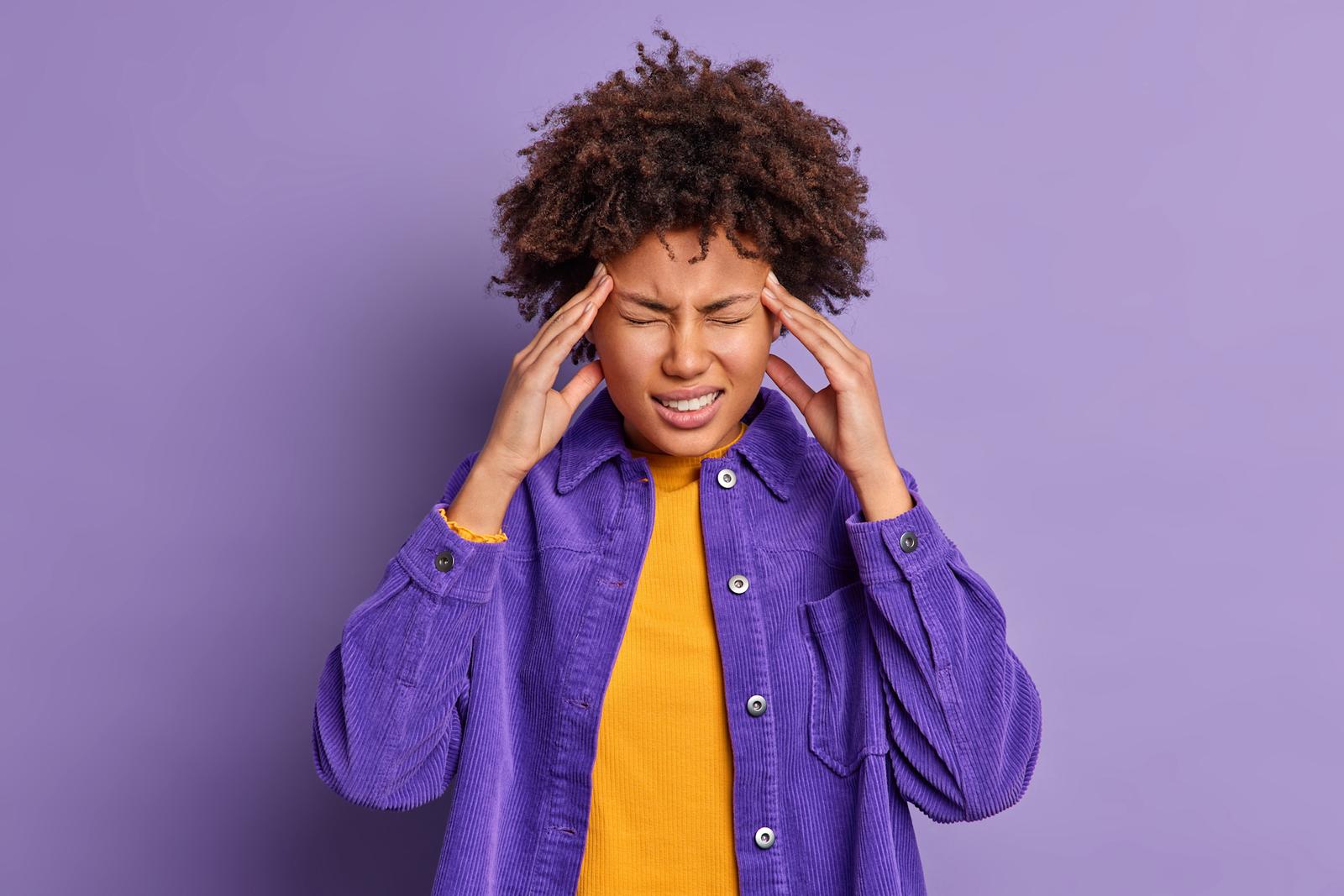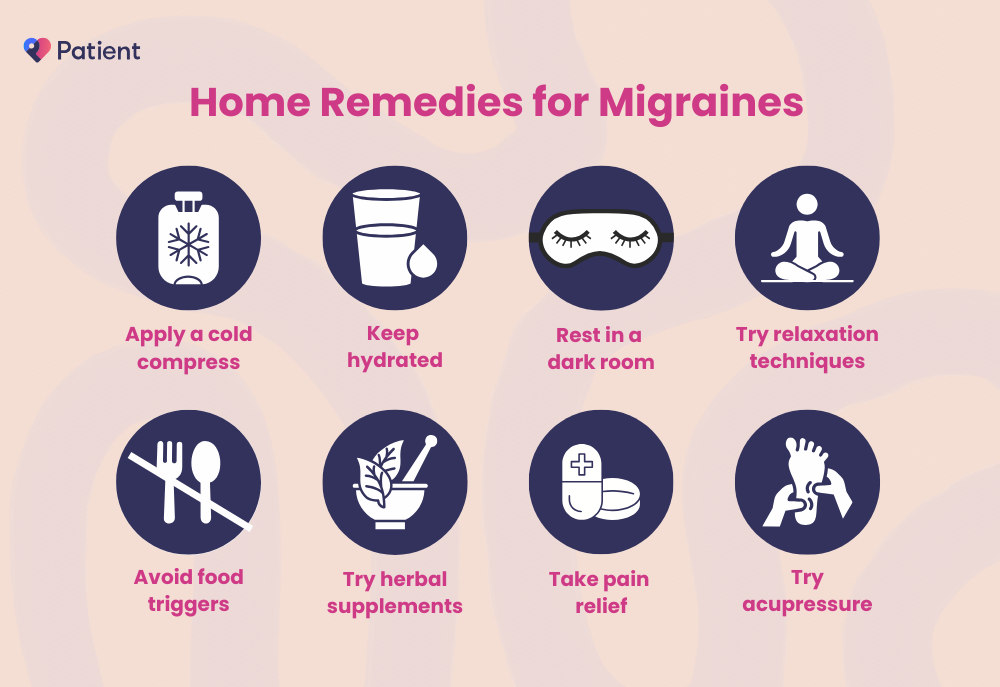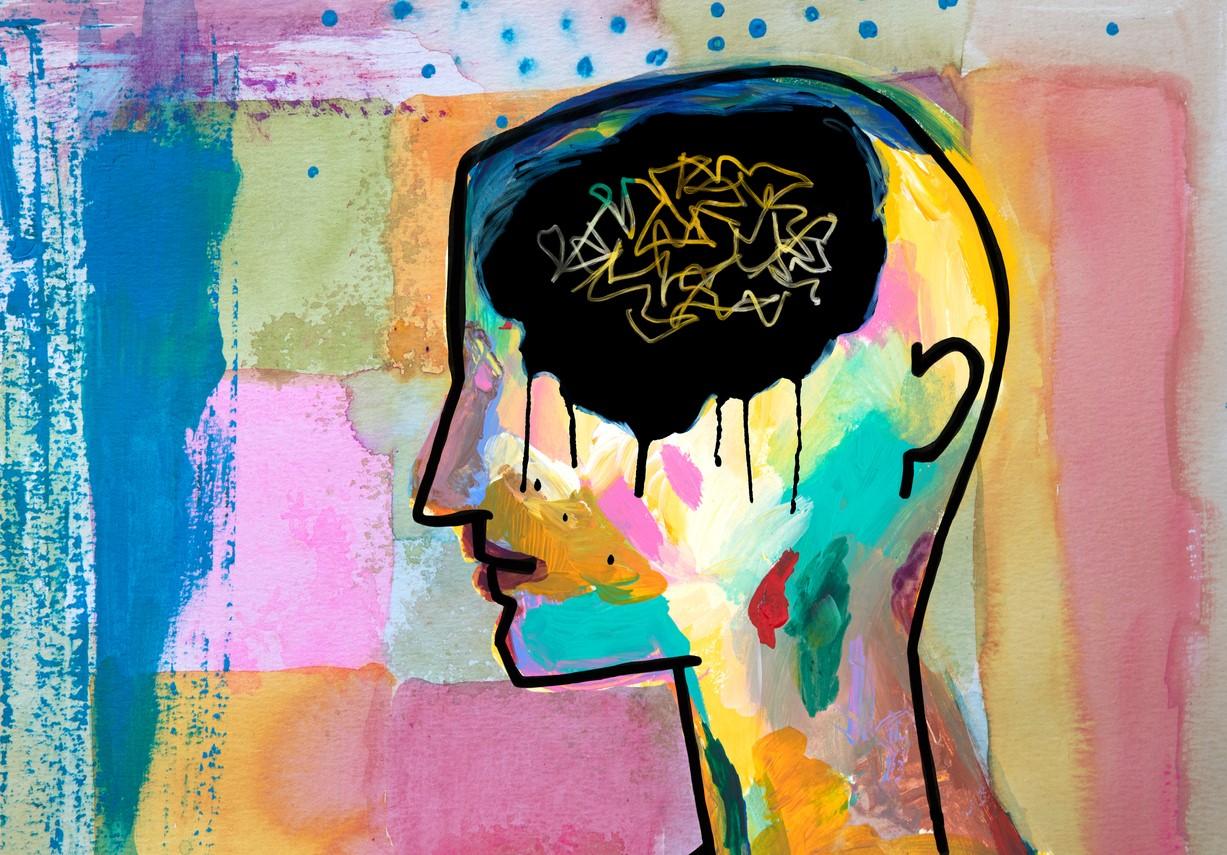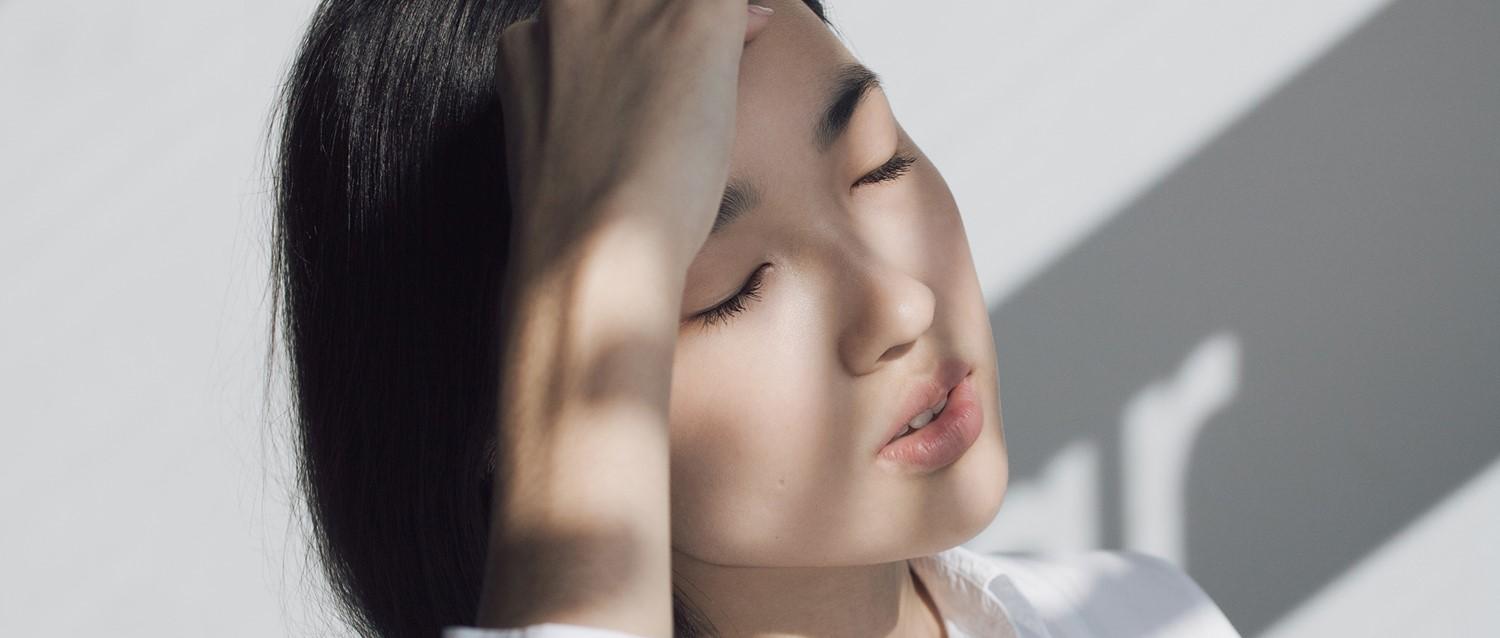
10 home remedies for fast migraine relief
Migraine remedies
Peer reviewed by Dr Colin Tidy, MRCGPAuthored by Heather AinsworthOriginally published 22 Oct 2025
Répond aux besoins du patient lignes directrices éditoriales
- TéléchargerTélécharger
- Partager
- Langue
- Discussion
Migraines are more than ‘just a headache.’ They can be intense, throbbing, and often come with feeling sick, light sensitivity, and the need to shut out the world. If you’ve ever found yourself desperate for relief but unsure about what works - you’re not alone.
The good news? There are several effective ways to manage migraines right at home.
Dans cet article :
Migraines can strike at the worst times - whether you’re working from home on a deadline, juggling the chaos of parenting, or simply trying to unwind in front of the TV. The pain, sensitivity to light, and brain fog can make even simple tasks feel impossible. When a migraine hits, fast relief becomes the top priority.
While not every remedy works for everyone, these home remedies are some of the most effective for easing symptoms and helping you get back on track with your day.
Migraine home remedies

Poursuivre la lecture ci-dessous
How to get rid of a migraine
1. Apply a cold compress
Using a cold compress on your forehead, neck, or temples, and moving to a cooler environment may help reduce the severity of a migraine attack1.
Use the cold compress for 15-20 minutes at a time, then take a 15 minute break before reapplying. Always ensure a cold pack is wrapped in a tea towel to avoid damaging your skin.
2. Stay hydrated
Dehydration can trigger or worsen migraines2. Sip cold water slowly as rapid drinking can upset your stomach or cause brain freeze.
You can also try drinking coconut water or an electrolyte drink if you’ve been sweating a lot or having trouble eating. Aim to stay consistently hydrated throughout the day to prevent migraines from getting worse or coming back.
3. Rest in a dark, quiet room
Light and noise are major migraine triggers3. Resting in a dark, quiet room as soon as a migraine starts may help ease symptoms.
Try:
Closing any curtains or blinds, switching off electronics, and resting your head.
Using an eye mask and earplugs for added comfort.
Even 20-30 minutes of rest in a peaceful environment could significantly reduce pain.
4. Try deep breathing or relaxation techniques
Stress is one of the most common migraine triggers4. Adding relaxation into your daily routine may help prevent and relieve migraines.
Try:
Deep breathing: inhale slowly for 4 seconds, hold for 4, and exhale for 4, and repeat.
Gentle yoga or stretching: stretch your neck or shoulders to help remove tension.
Regular relaxation practice could lower stress hormones and improve overall migraine control.
5. Take supplements
Supplements including magnesium, vitamin B2 (riboflavin), coenzyme Q10, vitamin D, and omega-3 may help manage and prevent migraines by improving energy levels in brain cells, calming nerve activity, and reducing inflammation5.
You should take them daily for several months to determine if they are effective.
6. Try acupressure
Applying pressure to specific points on the body may promote relaxation, improve blood flow, and reduce muscle tension, which may lessen the intensity or frequency of migraine pain6.
Common pressure points for migraine relief are the head, face, arms, hands, and feet.
7. Limit screen time
Limiting screen time could help reduce migraines by preventing eye strain, bright light exposure, and overstimulation that can trigger or worsen headache pain7.
If you really need to be viewing a screen, try turning down the brightness to help with light sensitivity.
8. Try herbal remedies
Some herbal remedies such as peppermint, ginger, and lavender oil, might help relieve migraine symptoms by relaxing muscles8, reducing inflammation9, and blocking pain signals10.
Try:
Putting a few drops of diluted peppermint oil into a bath.
Taking a ginger supplement or massaging diluted essential ginger oil into your temples.
Adding a few drops of lavender oil into hot water and inhaling the vapour or massaging it into the skin.
9. Avoid food triggers
Avoiding common food triggers such as aged cheeses, processed meats, chocolate, alcohol, caffeine , artificial sweeteners, and pickled or fermented foods, may help prevent migraines from happening or worsening11.
Triggers can vary from person to person, so keeping a food and symptom diary can help identify personal sensitivities.
10. Take non-steroidal anti-inflammatory drugs (NSAIDs)
Sometimes, combining natural remedies with medicine is the most effective approach for quick pain relief.
Common over-the-counter NSAIDs include:
Ibuprofen.
Aspirine.
For best results, take the medicine as soon as symptoms begin. Avoid frequent use - more than twice a week - as overuse can lead to rebound headaches.
When to see a doctor for migraines
Dr Katy Munro, GP and Senior Headache Specialist at the National Migraine Centre, explains: “You should seek urgent medical attention if you experience any of the following:
Sudden, severe headache.
A new headache with fever, neck stiffness, or altered mental status.
Weakness, vision loss, or confusion.
A headache with painful red eye and changes to your vision.
A headache after trauma - such as a fall.
A headache if you have a weak immune system, are pregnant, or have cancer.
Any of these symptoms could be a sign of something serious that requires emergency treatment.
"See a doctor if your migraine is not responding to treatment, is getting worse over time, or lasts longer than 7 days,” she says.
Résumé
For fast migraine relief at home you should stay hydrated, rest in a dark room, use a cold compress, try relaxation techniques, limit screen time, avoid food triggers, and take NSAIDs.
Everyone’s migraine triggers are different, so try a few strategies to see what works best for you, and keep track of patterns with a migraine trigger diary.
For more information on how to treat migraines, read our information leaflet called migraine treatment.
Poursuivre la lecture ci-dessous
Pour en savoir plus
1. Sprouse-Blum et al: Targeted Neck Cooling in the Treatment of the Migraine Patient
2. Korsha et al: Association of drinking water and migraine headache severity
3. Artemenko et al: Migraine and light: A narrative review
4. Stubberud et al: Is there a causal relationship between stress and migraine?
5. Hajhashemy et al: Practical supplements for prevention and management of migraine attacks
6. Hsieh LL et al: Effect of acupressure and trigger points in treating headache
7. Roy et al: Increased screen time and its association to migraine and tension-type headache
8. Sasannejad et al: Lavender essential oil in the treatment of migraine headache
9. Rondanelli et al: Clinical trials on pain lowering effect of ginger
11. Hindiyeh et al: The Role of Diet and Nutrition in Migraine Triggers and Treatment
Sélection de patients pour La migraine

Cerveau et nerfs
Vyepti : un nouveau médicament pour prévenir les migraines
Un nouveau médicament contre la migraine chronique pourrait améliorer l'accès à un traitement efficace de prévention de la migraine au Royaume-Uni. Quelle est l'efficacité de Vyepti (eptinezumab) ? Et qui pourrait bénéficier du traitement ?
par Amberley Davis

Cerveau et nerfs
Le Botox peut-il guérir vos migraines ?
La plupart d'entre nous souffrent de temps à autre d'un mal de tête. Mais imaginez que vous ayez plusieurs migraines débilitantes par semaine, souvent accompagnées de nausées ou de vomissements. Janet Falcondale, 46 ans, originaire du North Yorkshire, souffre de maux de tête et de migraines depuis l'enfance. "Mes migraines commencent souvent par une aura - un problème visuel qui provoque des taches aveugles. J'ai dû m'absenter de mon travail et je suis restée au lit pendant plusieurs jours", explique-t-elle. Les migraines sont souvent débilitantes, ce qui signifie que les personnes souffrant de crises fréquentes peuvent voir leur vie quotidienne considérablement perturbée. La perte d'opportunités au travail, la baisse de performance due au présentéisme et même l'admission à l'hôpital : les migraines régulières peuvent être un véritable calvaire.
par Gillian Harvey
Poursuivre la lecture ci-dessous
Historique de l'article
Les informations contenues dans cette page ont été évaluées par des cliniciens qualifiés.
Date de la prochaine révision : 22 octobre 2028
22 Oct 2025 | Originally published
Auteur: :
Heather AinsworthExaminé par des pairs
Dr Colin Tidy, MRCGP

Demandez, partagez, connectez-vous.
Parcourez les discussions, posez des questions et partagez vos expériences sur des centaines de sujets liés à la santé.

Vous ne vous sentez pas bien ?
Évaluez gratuitement vos symptômes en ligne
Sign up to the Patient newsletter
Your weekly dose of clear, trustworthy health advice - written to help you feel informed, confident and in control.
By subscribing you accept our Privacy Policy. You can unsubscribe at any time. We never sell your data.